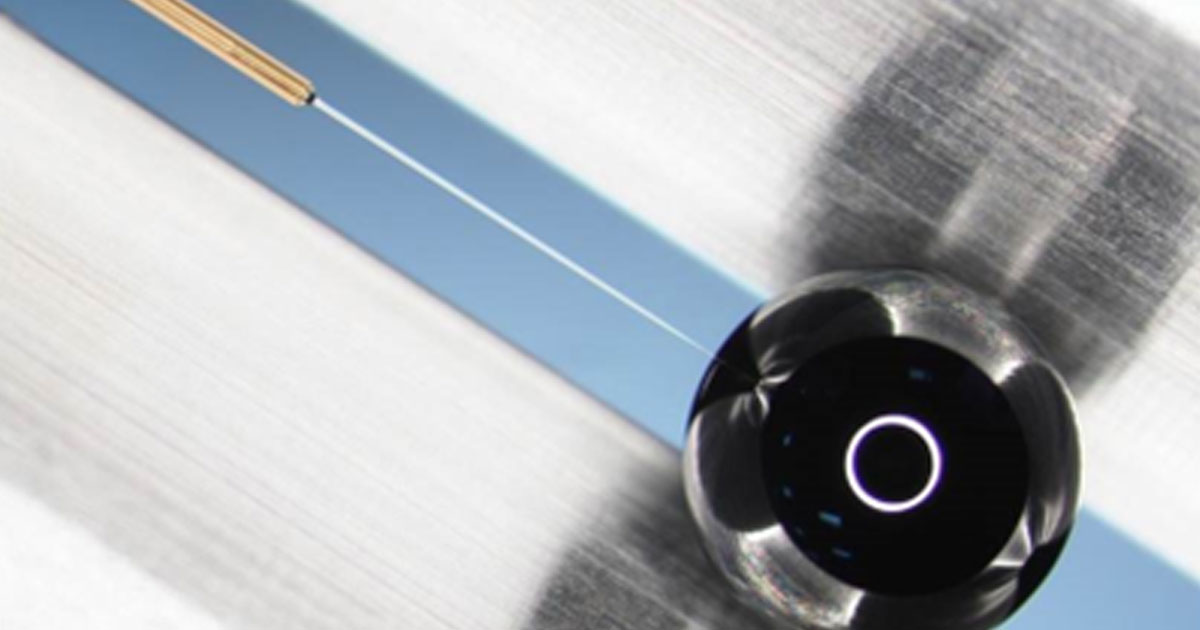
General Atomics Contributes to First Recorded Fusion Ignition at Lawrence Livermore National Laboratory
Inertial Confinement Fusion experiment utilizing GA produced components yielded 3.15 MJ—a 50% gain and first-ever fusion ignition in a laboratory setting
San Diego, Dec. 16, 2022 – Precision components fabricated and processed by General Atomics (GA) helped to facilitate a record-breaking Inertial Confinement Fusion (ICF) experiment at the National Ignition Facility (NIF) at Lawrence Livermore National Laboratory (LLNL). During the experiment, conducted on December 5, 2022, a total of 2.05 megajoules (MJ) of energy were delivered to the target assembly, resulting in 3.15 MJ of fusion energy output.
The target components that were used in this historic experiment were produced and characterized at GA and provided to LLNL for final assembly and proofing ahead of the experiment—part of the long-standing relationship between the two organizations under the ICF program.
Under the direction of the Department of Energy’s (DOE) National Nuclear Security Administration (NNSA), the U.S. ICF research program aims to achieve a safer, more secure, and effective nuclear deterrent without underground testing by generating thermonuclear burn conditions in a laboratory setting.
“General Atomics is proud to partner with LLNL and the larger fusion community to push the boundaries of ICF research, and we share in the excitement of this historic achievement,” said Mike Farrell, Vice President of Inertial Fusion Technologies at GA. “As a leader in the design and assembly of ICF targets and target components for the U.S. national laboratories and others, we are proud to support these experiments to reach and exceed energy parity. We congratulate LLNL and the NNSA for this breakthrough result, which is the culmination of many decades of hard work and close collaboration between countless individuals at LLNL, Los Alamos National Laboratory, Sandia National Laboratories, the University of Rochester’s Laboratory for Laser Energetics, and the fusion community at large. We look forward to building on this success and shattering even more records in the future.”
“We are absolutely thrilled with the accomplishment, which is a significant milestone for the entire fusion community. We are gratified that GA was able to play a role in this historic achievement,” said Anantha Krishnan, Senior Vice President for the Energy Group at GA. “We look forward to working closely with NNSA and our partners in the National Laboratories in crossing the next set of milestones for the ICF program.”
In a laboratory setting, ICF occurs when a small capsule filled with deuterium and tritium fuel is rapidly compressed by high-powered lasers, causing the fuel atoms to fuse together and release significant amount of energy. GA participates in this research by designing and fabricating targets used at NIF and other ICF facilities, as well as providing components and services important to the shot process. GA fabricates these materials to highly precise tolerances to support the DOE’s ICF research program and has served as NNSA’s primary commercial partner for ICF targets and target support services since 1991. GA provides more than 12,000 components yearly for experiments conducted by the four U.S. ICF laboratories.
The NIF laser system is the most precise and reproducible laser system in the world, focusing 192 laser beams onto a target the diameter of a BB pellet. The combined power of these laser shots delivers more than 2 million joules of ultraviolet energy and more than 10 quadrillion watts of fusion power for 100 trillionths of a second, generating the temperatures of more than 180 million degrees Fahrenheit and pressures of more than 100 billion Earth atmospheres that are necessary for an ICF reaction.
The record-breaking result at NIF demonstrates the importance of public investment in fusion science and robust collaboration with the private sector. In addition to being a significant milestone for the NNSA’s mission, this result also has positive implications for commercializing fusion energy, including using ICF techniques, referred to as Inertial Fusion Energy (IFE).
IFE would differ from another approach to achieving fusion energy, known as Magnetic Fusion Energy (MFE), which uses magnetic fields to confine the plasma. MFE has been more extensively researched as an approach to achieving fusion energy, and decades of public and private research have produced validated scientific models that will be critical for a fusion energy pilot plant. GA is a global leader in MFE and operates the DIII-D National Fusion Facility on behalf of the DOE’s Office of Science as a user facility and has been conducting groundbreaking research since the mid-1980s. Separately, GA recently announced its concept for an MFE-based fusion pilot plant.
About General Atomics: Since the dawn of the atomic age, General Atomics innovations have advanced the state of the art across the full spectrum of science and technology – from nuclear energy and defense to medicine and high-performance computing. Behind a talented global team of scientists, engineers, and professionals, GA’s unique experience and capabilities continue to deliver safe, sustainable, economical, and innovative solutions to meet growing global demands.
For more information contact: Evan Polisar, Strategic Communications Manager – 858-455-3474 – Evan.Polisar@ga.com